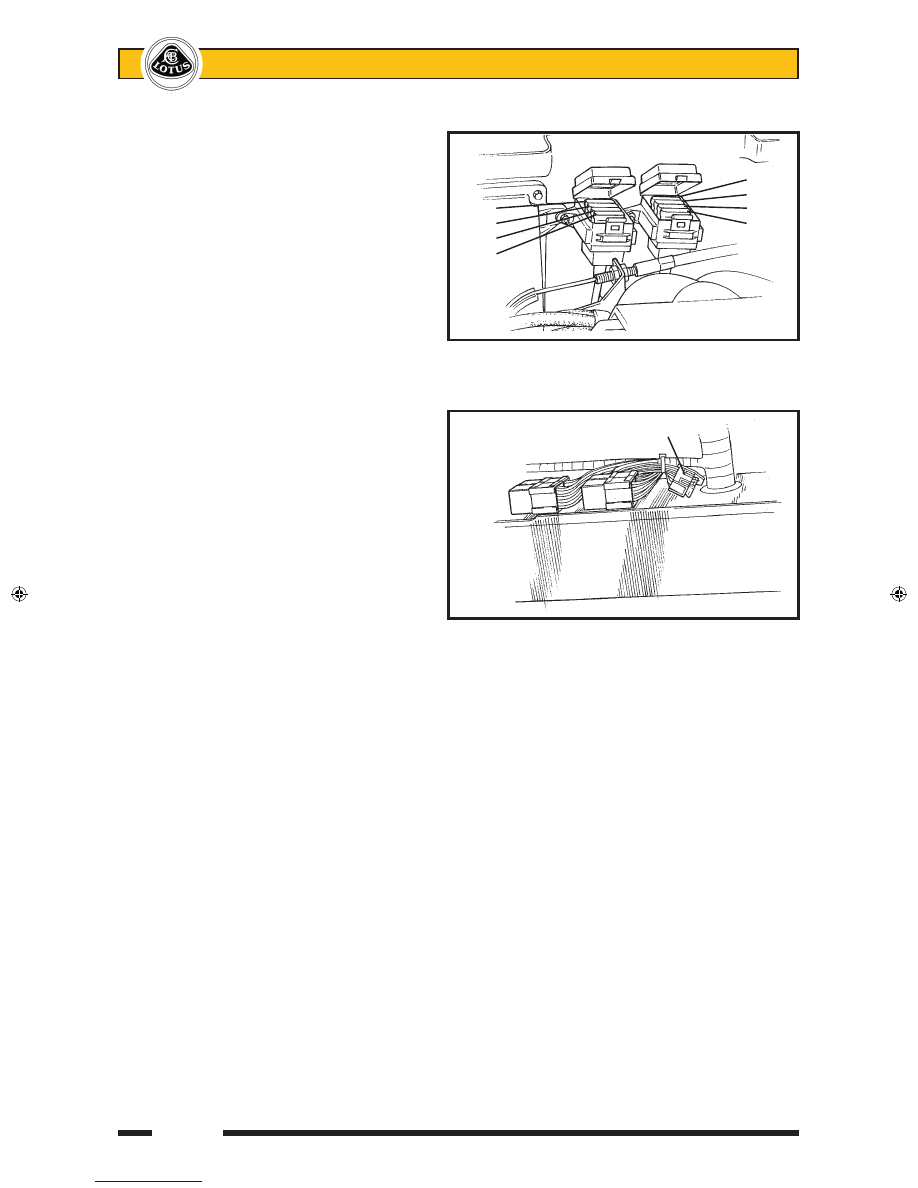Lotus Elise / Lotus Exige. Instruction - part 73

Page 14
Lotus Service Notes
Section MP
Engine Compartment
Fuses and relays associated with the
engine management system are contained
in two 4-position fuse holders located at the
front of the engine bay on the cabin bulkhead,
adjacent to the engine ECM. To access the
fuses, unclip rear edge of the cover.
Fuse no. Rating
Circuit
R1
20A
Fuel pump
R2
3A
Immobiliser
R3
5A
Alternator sense
R4
5A
ECU battery feed
R5
5A
O2 heaters
R6
7.5A
VSV's VVT, VVL, IAC
R7
10A
Injectors, ignition coils
R8
5A
Re-circ. pump
Interior Fuses & Relays
The wash/wipe module, turn/hazard
flasher relay, horn relay and a relay for inertia
switch activation of the central door locking,
are mounted on the scuttle beam above the
passenger footwell, with four fuses secured to
the harness in that area.
Fuse no. Rating
Circuit
C1
20A
Interior fan
C2
15A
Wiper motor
C3
7.5A
Audio key-in
C4
10A
A.C. compressor
A 60A Maxi fuse protecting the ABS circuit is located beneath the passenger side fascia top, adjacent to
the positive post.
A multi-function relay unit containing the engine control relay, fuel pump relay and starter relay is mounted
in the engine bay near the ECU. A similar relay unit is mounted in the front services compartment alongside
the fusebox, and operates the a.c. compressor and radiator fans.
Important Note: Although the two modules
are identical in appearance, their function is different and they must not be transposed. The a.c. relay module
A117M0038F has a brown label marked YWB100800; The engine relay module A111E6024F has a white label
marked YWB100970.
For the location of the vehicle alarm system components, see sub-section MP.1.
Fuse colours:
2A - Black
3A - Violet
4A - Pink
5A - Orange
7.5A - Brown 10A - Red
15A - Light Blue 20A - Yellow
25A - Clear
Relay Position
RHD:
Inboard top;
Wiper
Inboard bottom;
Flasher
Outboard top;
CDL trip
Outboard bottom;
Horn
LHD:
Inboard top;
Flasher
Inboard bottom;
Wiper
Outboard top;
Horn
Outboard bottom; CDL trip
ENGINE BAY FUSES
8
7
4 6
3 5
2
1
ohs136
Front Fusebox ‘C’
Viewed
from
beneath
m248a
sn_mp_ cyclone.indd 14
02/01/2008 04:42:08